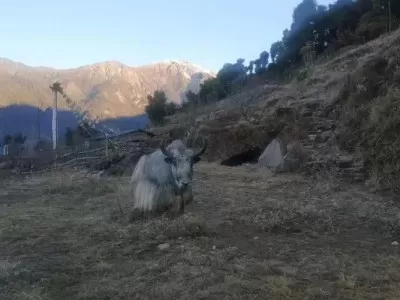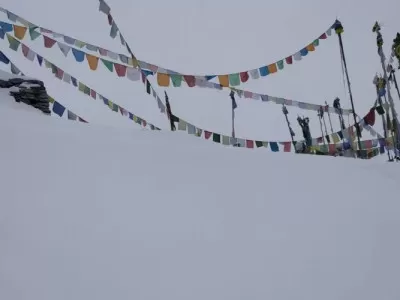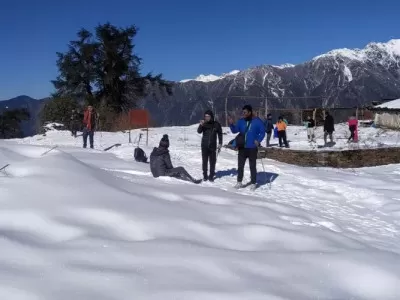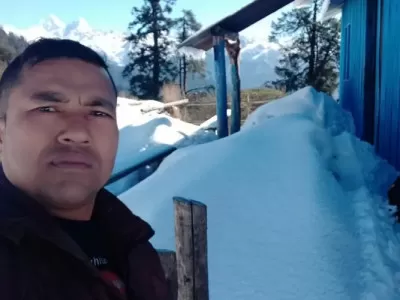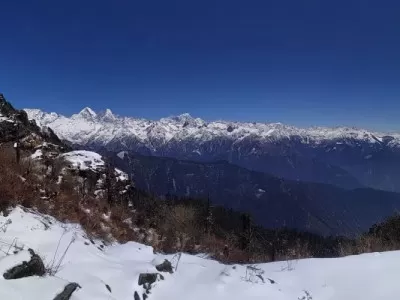Ama Yangri Trek for Nepali
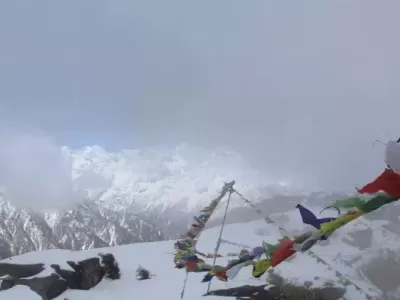
Ama Yangri Trek for Nepali Facts
| Package: | Ama Yangri Trek for Nepali |
| Duration | 2 days |
| Price | NRS 5500 per person |
| Transportation | Bus, hiace |
| Group Size | +7 |
| Difficulty | Moderate |
| Max Elevation | 3771 m |
| Accommodation | Hotels/Mountain Lodges |
| Meal | pay extra |
| Trip Start / Ends | Kathmandu / Kathmandu |
| Contact Detail (Viber/Whatsapp) | +9779761791620 |
| Trip Note: | Price offered is full inclusive and it is quoted in NPR. Trip will only starts when you will arrive to Kathmandu International Airport. The given itinerary is just a standard itinerary and could be customized on request. |
Table of Content.
Trip Overview
Ama Yangri Trek is the newly opened hidden gen of a Helambu region. This region is famous among local tourist who loves to trek in the Himalaya. This trek is also known as poon hill trekking of Kathmandu valley because the view from this place is similar to that from poon hill. It is located 80km away from Kathmandu.
Ama Yangri Trek is one of the less popular but super awesome trekking destinations in the Helambu region. It is the highest peak around Kathmandu valley, which lies at an altitude of 3771 meters. Ama Yangri is regarded as a deity that has become the protector of the Helambu area. The Ama Yangri peak can be compared to the Poon Hill of the Annapurna region in terms of the mountains' views.
Ama Yangri is an area inhabited by Sherpas, Tamangs, and Chhetries under Helambu Circuit trekking, which is one of the famous destinations for its vacationers, which lies in the Sindupalchok district beneath the Langtang National park. Helambu Circuit Trekking, also well-known as "Hyolmo Heritage," is a simple, natural, and geographically intriguing hiking tour that people can experience the hills of Majestic Himalayan scenery, fantastic opportunity to encounter Green Landscapes and unique Hyolmo Culture. It is a natural and geographically fascinating trekking tour that travelers can experience the hills of Majestic Himalayan scenery, a great chance to experience Green Landscapes and Hyolmo culture. We've got excellent views of mountains from low altitudes that include the Langtang Range, the Annapurnas, Manaslu, and even Everest on a clear day. The language, culture, and dress of those Helambhu Sherpas are incredibly different from people who reside in the Khumbu area and Rolwaling. The area is quite a famous location for Thanka arts.
It is located at the elevation of 3771m along with the trek passes through some beautiful rhododendron, pine, and oak forests. On Chaitra's full moon day, the Hylmos from all around the area, country, and abroad also flock to Aama Yangri. As a part of the ritual, they climb to the summit of this mountain before daybreak and watch the sunrise.
Ama Yangri Trek Route:
Ama Yangri is a peak that is located in the Helambu area of Sindhupalchowk district of Nepal. Ama Yangri peak treks in the Tarke Ghyang village of the Helambu area. Tarke Ghyang could be reached easily via a motorable road, or we can trek. It is highly recommended to trek up to Tarke Ghyang, from Timbu. You may get a bus to Timbu readily from Chuchhepati, Kathmandu. The trek from Timbu to Tarkeghyang can be completed in a day. It takes about 5 hours from Timbu to Tarkeghyang. The route is full of diverse woods, birds, and beautiful little villages. This trek is fantastic to encounter both culturally and naturally.
Tarkeghyang rests in a beautiful location just below the Ama Yangri peak. There are loads of lodges so that it won't be much of a problem. You may stay the night in Tarkeghyang. This trek is relatively varied. You go from dense rhododendron forests to upper Himalayan parts with clear views of the Himalayas. After reaching the peak, you can dive to the character for a while, then get back into taking Ghyang, again and again, remain in the evening. The following day, you can access to Timbu and then to Kathmandu from there.
Ama Yangri trek difficulty:
This trek is moderately hard. The road's upper region to get to the peak is relatively difficult since the route moves nearly vertically. Additionally, the trail seems to get extremely slippery, whether it rains. Otherwise, the path is good to experience. Be careful to take lots of water with you. Also, take dry fruits, and get shoes with a good grip!
Trip Highlights
- Closest high-altitude viewpoint from Kathmandu
- Cultural immersion in the Hyolmo region
- Less crowded, peaceful trail with spiritual significance
- Ideal for a weekend getaway
Ama Yangri Trek Cost
Permit: foreigners need to have the Tims and the permit of Langtang National Park Entrance, which will cost around Rs 3000, For Saarc country Rs 1500, and the new rule of the government is also charging Nepali People Rs 100 as the Entrance fee.
Total Trekking cost with accommodation for Nepali citizens is NRS 5500 if you have a group of 7+.
Ama Yangri Trek for Nepali Itinerary
Day 1: Kathmandu to Tarkeghyang
- Drive from Kathmandu to Helambu (Tarkeghyang) – approx. 6–7 hours drive
- Explore the traditional Hyolmo village of Tarkeghyang
- Enjoy mountain views and local hospitality
- Overnight stay at local teahouse/lodge in Tarkeghyang
Day 2: Tarkeghyang to Ama Yangri (3771m) – Return to Kathmandu
- Early morning hike to Ama Yangri Peak (4–5 hours ascent)
- Spectacular panoramic views of Langtang, Ganesh Himal, Dorje Lakpa & Jugal Himal ranges
- Visit the stupa and prayer flags at the top – a spiritually powerful site for Buddhists
- Descend back to Tarkeghyang for lunch
- Drive back to Kathmandu (6–7 hours)
Trip Includes/Exclude
Ama Yangri Trek Videos
Ama Yangri History
Construction Of Ama Yang-Ri (Ama Yangri Protector of entire Hyolmo valley ), ‘Yang Rill Mountain,’ is known fondly to the local villagers as Ama Yangri, meaning mother Yangri. Ama Yangri is considered a Dakini, who has become a goddess protector of the entire region by the power of her compassion. Locals born under her shadow grow up depending on her blessings. Looking upon her mountain form offers the viewer blessings for long life and freedom from accidents. When parting, she is the final face villagers look upon, hoping to impress her form in their minds so that they can draw upon her memory in times of need. Upon return, they prostrate before her in thanks for a safe journey and comfort in her forests' enfolding arms.
Yearly, on Chaitra's full moon (March or April), a big festival is held in her honor to pay homage to her presence, thanks to her protection and hopes of success for the following year. Sherpa (Hyolmo) peoples from all over the region climb to the summit before the break of day to greet the rising sun. Local lamas lead a morning long Puja, and from the afternoon into the evening, and the local people lead the community in dance. Following local Sherpa (Hyolmo )tradition, Raksi (corn, apple wine), Chang (barley beer), and Traditional butter tea flow freely. Ama Yangri is left alone again at moonset, with only the echoes of laughter and singing interlaced with the spiraling smoke of incense as her offerings. Layers of old leaves in search of fodder. After the summer monsoons, he is a leftover, a relic from last year’s yak herder migrations in late August. Alone he guards the mountain, casting a quizzical eye upon all who pass by. Through the large marsh-like pass (provided that environmental geography has changed little in the past 400 years), the way of the pilgrims is the way of the old outer circumambulation route, which few people still use. It circles the mountain's base in an ever-upward spiral, where it eventually meets up with the modern path just below the summit. At this point, the trail again turns left, ensuring another full circumambulation before reaching the top. Crowning the summit is a large white Chorten; circumambulation of this completes the full Cora route's outer, inner and sacred levels, important to all truly significant places of pilgrimage.
From the summit, the whole ridge of the Yangri Danda is visible in both directions. To the south, the Kathmandu Valley unfolds like a scroll. On clear days and in the early morning, the Great Stupa of Boudha is visible; its great dome seemingly suspended above its surroundings due to the effect of its blindingly white base. To the north is Dawa Chati, consort mountain to Ama Yangri and hiding place for many terms. Beyond Dawa Chati is the Himalayas' whole expanse; with enough imagination, one could almost see Everest far to the east. Steep valleys fall from both flanks, their depths not visible, but their rivers' sounds still audible in the morning air. Directly below the western side's summit, the ‘marsh-like pass can be seen through a fringe of the forest. Though dry in early spring when mountain snows have yet to respond to summer’s warmth, the marshland soon becomes a lake after the monsoons. This lake is the abode of Ama Yangri’s mythological beast, a fierce serpent dragon. On the walls of the Tarkye Gyang gompa, she is portrayed in woman form riding this dragon. The summit is long and narrow; following the ridge, it descends a few meters into a shallow basin, then rises again to a smaller, lower summit topped by a prayer flag and a few large flat rocks. On the southern end of the summit rests a large Chorten surrounded by prayer flags. The whitewashed sides are cracked and damaged. Mortar has fallen out from between the stones, and the crown point, carved of yellow wood, is now housed in the small shrine inset on the southern face of the Chorten. Dried rhododendron flowers are stuck haphazardly in the cracks as offerings of physical apology for damage unattended. The Chorten has been hit several times by lightning, yet still stands, a silent sentinel to the passage of change. Below the chorten in the shallow basin between the two summits is the remains of a small meditation hut. One side is dug into the earth with piled rocks for added shelter.
The other side is open to the endless expanse of mountains and sky. Locals hold it as a compelling place to meditate. On the other side of the hut is a low spiky bush with katas (Throne) interwoven through its branches. Aside from grass, it is the only vegetation on the otherwise barren mountainside. At the base of the bush is a pile of rocks vaguely shaped in a frog's form. Inside and protected is a bare trickle of a spring. It offers only enough water to feed the sheltering bush and keep the small stone in the center wet. If the stone ever dries out the gentle rains upon which the entire region depends, it is said that this small stone, called by some the weather frog, possesses powerful qualities in local legend. If touched by a human hand, bad weather will immediately descend upon the mountain top, be it rain, snow, hail, wind, or a combination of all four. There are several stories in the villages about those who tested the ‘frog,’ all with bad results. Legend holds that the spring was much bigger once upon a time but slowly decreased over the years.
In 1723 a land grant, recorded on copper plate, was rewarded to Meme Surya Seng-ge, a well-known yogin from the area, for services to the Malla king (Clarke). According to descriptions of holy sites and lists of localities established by Guru Rimpoche, he determined the summit of Ama Yangri to be the most auspicious place for a monastery. Upon this land, he built a large monastery and temple complex, which was later destroyed by natural causes (Ehrhard). Local history tells the story of Meme Surya Seng-age, who came to the area with his wife and son, Tele Dudjoms (who was the final recognized incarnation of the Hyolmo Tulku lineage. Upon completion of the temple grounds, it was revealed that the area's blessings were so powerful that anyone looking upon the monuments would be immediately saved from rebirth in the lower realms. Soon after the consecration of the temple grounds, lightning struck the area six times. No harm was done until it was hit a seventh time, whereupon the entire complex burned to the ground, leaving Meme Suya Seng-ge still meditating safely inside the ruins. The explanation for the distraction is that looking upon the temple was too easy an escape from rebirth in the hell realms. It was felt based on merit rather than upon the mere perception of a great temple. At present, all that remains of the once-great monastery is the lonely white Chorten, also cracked by lightning, and now desecrated, as a couple of years ago, one of the cracks was widened the sacred relics and treasures within were stolen. It is unclear what buildings were upon the summit of Ama Yangri in 1629 and what happened to them. The text refers to Siddha Gyaltshen-bum, a disciple (follower) of Rigdzen God Thru-Chen, a great Teton from the region. Still, no explanations or histories of his role at Ama Yangri are available.
Another mention is made to the ‘pure monk’ Tsulthrin, who used to bathe a sacred bronze mirror;”…and now, as people visit these sacred representations, they all drink some of this bathing water, as a result of which they are saved from rebirth in the lower realms – thus it has been prophesied by Master Padma [Sambhava]. At this navel center of ‘Helambu’s fence of snowy peaks,’ The Siddha Gyaltshen-bum made a start with the building of temples and the rest, but due to obstacles that arose, he could not complete the task.”
Later on, the grandchildren of Meme Surya Senge-ge and their followers from Tarkeyghyang renovated Ama Yangri several times. Many pieces of the story are missing, but local histories and inherited memories only extend as far back as the early 1700s when villages first became established in the area. No proof has been found. Hyolmo Langra Gaybsa (present Tarkeyghyang village was established in the time of Meme Surya senge-ge.Some other Hyolmo villages were already there before Meme Surya senge-gel. It is mention that Ama Yangri Gonpa (Monastery) was the first Gonpa in the area, and afterward, Pema Chholin Gonpa (present Tarkeghyang monastery ) was built with Lamas.
History mentions that Tarkeyghyang was established with eighty families with Meme Surya। Meme, big Lama, and got teaching from him surrounding Hyolmo “Barus” (Baru refers to rich people Hyolmo Language) migrated to Tarkeyghyang. That’s how a huge village in Hyolmo Tarkeyghyang was established, which is also known as Langragyapsa.
Price Starting From
NPR 5500pp
We do small group or private trip as your request.
For quick information contact us at WhatsApp/Viber +977-9843724104
This trip can get redesigned and redeveloped as per your taste, for more information please e-mail us at hikingannapurna@gmail.com




